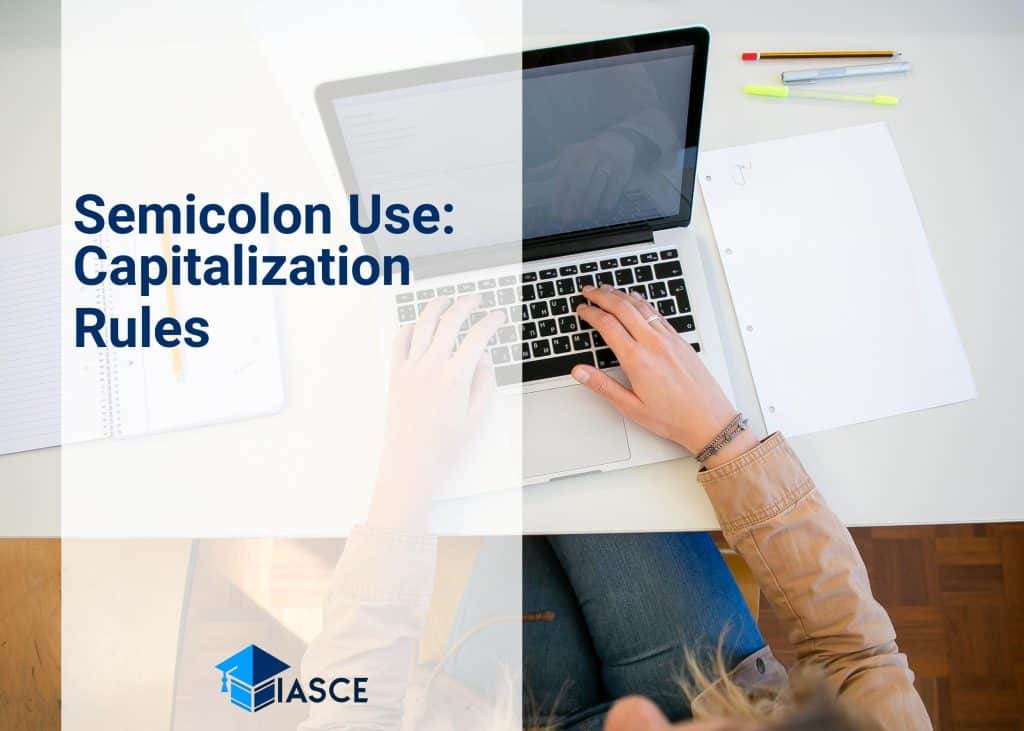Ever found yourself typing away, your thoughts flowing freely, when suddenly you’re stopped in your tracks by a punctuation conundrum? Don’t worry, you’re not alone. One question that’s often got me scratching my head is: Do you capitalize after a semicolon?
Well, I’ve done the research and I’m here to clear things up once and for all. In the world of grammar there are rules, and then there are exceptions. And trust me when I say this: understanding them can save us from many editing headaches down the line.
So let’s dive right into it! Get ready to conquer those pesky semicolons like a pro!
Understanding the Semicolon: A Brief Overview
I’ve often noticed that semicolons are among the most misunderstood punctuation marks in English. Many people avoid using them, while others sprinkle them liberally throughout their writing without really understanding their purpose.
Let’s start from scratch. A semicolon (;) is a punctuation mark used to link two closely related thoughts or ideas within one sentence. Think of it as a halfway point between a comma and a period; it’s stronger than a comma but weaker than a period.
In essence, you use semicolons to join two independent clauses – that is, those sentences which can stand on their own – without using conjunctive words like ‘and’, ‘but’, or ‘or’. Here’s an example:
-
Without Semicolon: “I have an important meeting tomorrow. I can’t stay out late tonight.” (Two separate sentences)
-
With Semicolon: “I have an important meeting tomorrow; I can’t stay out late tonight.” (The same idea expressed in one sentence)
Now, let’s address the question at hand – do we capitalize after a semicolon? The answer is no, you don’t capitalize the first word after a semicolon unless it’s a proper noun or an acronym. For instance:
|
Incorrect |
Correct |
|---|---|
|
“She loves summer; However, she hates the heat.” |
“She loves summer; however, she hates the heat.” |
|
“It was raining; Therefore, they canceled the picnic.” |
“It was raining; therefore, they canceled the picnic.” |
So there you have it! A brief overview of when and how to use semicolons in your writing. Keep practicing and before you know it, you’ll be wielding this versatile punctuation mark with confidence and finesse!
To Capitalize or Not After a Semicolon: Breaking Down the Rules
Let’s cut straight to the chase. When it comes to capitalizing after a semicolon, the answer is simple: you don’t need to. This rule applies unless what follows is a proper noun or other type of word that would normally be capitalized.
Why is this so? Well, in English grammar, we use semicolons as linking punctuation marks that connect closely related ideas within one sentence. They’re like soft periods that bring together two independent clauses without starting an entirely new sentence.
Here are some examples:
-
She loves pizza; he prefers hamburgers.
-
I want to travel; however, my bank account says otherwise.
-
We planned on hiking tomorrow; rain is forecasted, though.
Notice that in each case above, there’s no capitalization after the semicolon?
Yet it’s important to remember there are exceptions. If what follows your semicolon is a proper noun or an acronym – stuff you’d usually capitalize anyway – then go ahead and capitalize away!
Check out these instances:
-
I just finished reading “War and Peace”; Tolstoy truly was a master.
-
My next trip will take me across the Atlantic; NYC and London are on my itinerary.
In both sentences above, we see Tolstoy (a proper noun) and NYC (an acronym for New York City) capitalized after a semicolon because they inherently require capitalization.
So there you have it! The ins and outs of whether you should capitalize after using a semicolon. It’s not overly complex once you get your head around it – simply remember not to hit that shift key unless dealing with proper nouns or acronyms!
Conclusion: Applying Grammar Rules to Everyday Writing
So, you’ve learned about semicolons and capitalization, let’s talk about how to apply these rules in everyday writing. It might seem a bit daunting at first, but I’m confident that with practice it’ll become second nature.
Firstly, remember not every word following a semicolon should be capitalized. Only proper nouns or the start of a new sentence need that honor. For example:
-
Wrong usage: “I have two cats; They’re named Fluffy and Whiskers.”
-
Correct usage: “I have two cats; they’re named Fluffy and Whiskers.”
Secondly, don’t fear the semicolon! It’s your friend in writing complex ideas concisely. A well-placed semicolon can make your sentences more readable while also adding a touch of sophistication.
Lastly, keep practicing! The more you write utilizing these grammar rules, the better you’ll get at it.
Here are some examples for further clarity:
|
Incorrect Sentence |
Correct Sentence |
|---|---|
|
I love pizza; But I hate anchovies. |
I love pizza; but I hate anchovies. |
|
She didn’t see him again after that night; Although she did think of him often. |
She didn’t see him again after that night; although she did think of him often. |
|
He went to the park today; Because he wanted to play basketball. |
He went to the park today; because he wanted to play basketball. |
In conclusion, remember this simple rule: only capitalize after a semicolon if it’s followed by a proper noun or starts a new sentence. And don’t forget – practice makes perfect! Keep applying these grammar rules in your daily writing and soon enough you’ll master them completely.

